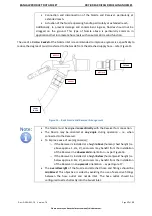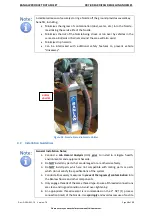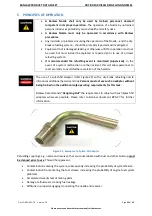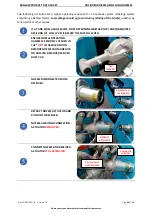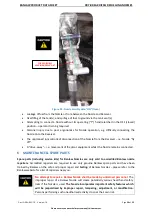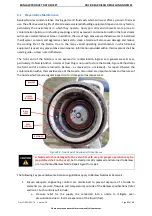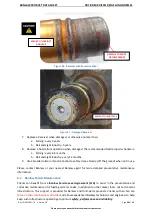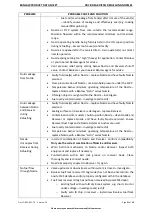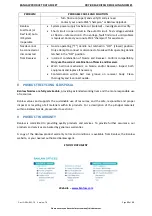
BANLAW PRODUCT DATA SHEET
DRY-BREAK DIESEL REFUELLING NOZZLES
Doc ID: PRH-REF-70 Version: 7.0
Page
30
of
32
Please ensure you have the latest version of this document.
7
TROUBLESHOOTING
This section provides troubleshooting recommendations for the range of Banlaw dry-break refuelling
Nozzles when installed, operated and maintained in accordance with Banlaw guidelines.
PROBLEM
PROBABLE CAUSE AND SOLUTION
Premature
nozzle shut-off
during
refuelling.
•
Increased system head pressure downstream of (after) the Receiver.
Potential causes include;
o
Excessive restriction to airflow from the tank vent(s)
–
check
breather hoses for obstructions (e.g. mud).
o
The flow control valve within the OFP system is throttling the
flow or faulty
–
investigate.
o
Premature operation of the OFP system
–
wait for fuel in the
tank(s) to settle and restart refuelling.
•
Nozzle spring setting too “low” (light) for application. Contact Banlaw or
your nearest Banlaw agent for advice.
•
Receiver spring setting to high (heavy) for application. Contact Banlaw or
your nearest Banlaw agent for advice.
•
Nozzle flow rate above recommended maximum. Reduce delivery flow
rate.
•
Nozzle flow rate below recommended minimum. Increase delivery flow
rate.
•
Excessive free-play (mechanical wear) in the Nozzles operating
mechanism - replace Nozzle and have faulty Nozzle serviced.
•
A component in the system has been replaced with a component which
causes increased flow restriction
–
investigate and return system to the
previous state.
•
Faulty Level Sensor - replace Level Sensor.
•
Faulty Flow Control Valve - replace Flow Control Valve.
•
Faulty Nozzle - replace Nozzle and have faulty Nozzle serviced.
•
A foreign object is caught within the Nozzle and/or Receiver
–
investigate.
Refuelling
operators
manually
overriding the
automatic tank
pressure shut
off function of
the Nozzle
•
Consult with operators to locate the specific offending refuelling
applications - investigate root cause(s) and rectify.
•
Confirm appropriate design and configuration of refuelling systems on
site
–
standardise as far as practicable the refuelling equipment on plant
equipment of similar configurations.
•
Provide training to refuelling operators stressing importance of the risks
associated with overriding the automatic shut-off function of a Nozzle.
Tank overfilling
•
If fitted, the
primary “zero tank pressure”
OFP system is faulty
–
investigate and rectify.
•
If using the “pressurised tank” feature of the dry
-break refuelling system
as a means of OFP;
o
Faulty (i.e. leaking) tank vent(s)
–
replace vent(s).


